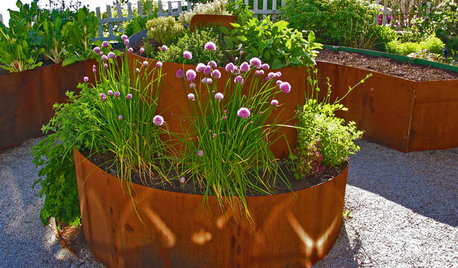400w hps system growing leggy plants
cddennison
15 years ago
Related Stories

EARTH DAYGrow a Beautiful Garden With Ecofriendly Greywater
Reducing home water waste means lower bills and a healthier planet. Here's how to set up a greywater home irrigation system that can help
Full Story
EDIBLE GARDENSSummer Crops: How to Grow Tomatoes
Plant tomato seedlings in spring for one of the best tastes of summer, fresh from your backyard
Full Story
URBAN GARDENSContainers Make Growing Edibles a Cinch
If life hands you a lack of land, grow lemons — with a few basics, you can proudly reap the fruits, veggies and herbs of your labor
Full Story
EDIBLE GARDENSSummer Crops: How to Grow Squash
Almost foolproof and with cheerful flowers, squash comes in a wide range of varieties to plant in spring
Full Story
SUMMER FRUITS AND VEGETABLESSummer Crops: How to Grow Beans
Grow your own beans for amazing variety and healthy, convenient produce all summer
Full Story
HOUSEPLANTSSimple Pleasures: Grow a Cheery Indoor Garden
Let houseplants work their magic on your rooms and you. These ideas will get you growing
Full Story
EDIBLE GARDENSHow to Grow Your Own European and Asian Pears
Try these trees for their good looks, delicious fruit and wide range of sizes — plus you can espalier them
Full Story
FARM YOUR YARDHow to Grow Vegetables in Containers
Get glorious vegetables and fruits on your patio with a pro’s guidance — including his personal recipe for potting mix
Full Story
GARDENING GUIDESWhat Kind of Roses Should You Grow?
Want to add the beauty of roses to your garden? Find out which ones, from old-fashioned to modern, are right for you
Full Story
LANDSCAPE DESIGNThe 7 Best Plant Types for Creating Privacy and How to Use Them
Follow these tips for using different kinds of plants as living privacy screens
Full StorySponsored
More Discussions






cannabisgrower
cannabisgrower
Related Professionals
Marina Landscape Architects & Landscape Designers · Norton Shores Landscape Architects & Landscape Designers · Monterey Landscape Contractors · North Richland Hills Landscape Contractors · Palatine Landscape Contractors · South Lyon Landscape Contractors · Waipahu Landscape Contractors · Arroyo Grande Fence Contractors · Charleston Fence Contractors · Hayward Fence Contractors · Saginaw Fence Contractors · Wake Forest Fence Contractors · Houston Roofing & Gutters · Manteca Roofing & Gutters · Ojus Roofing & Gutterscannabisgrower
cddennisonOriginal Author
cannabisgrower
tflinton
cddennisonOriginal Author
lermer
cannabisgrower
cannabisgrower
lermer
cannabisgrower
bebopson
cannabisgrower
lermer
cddennisonOriginal Author
hautions11